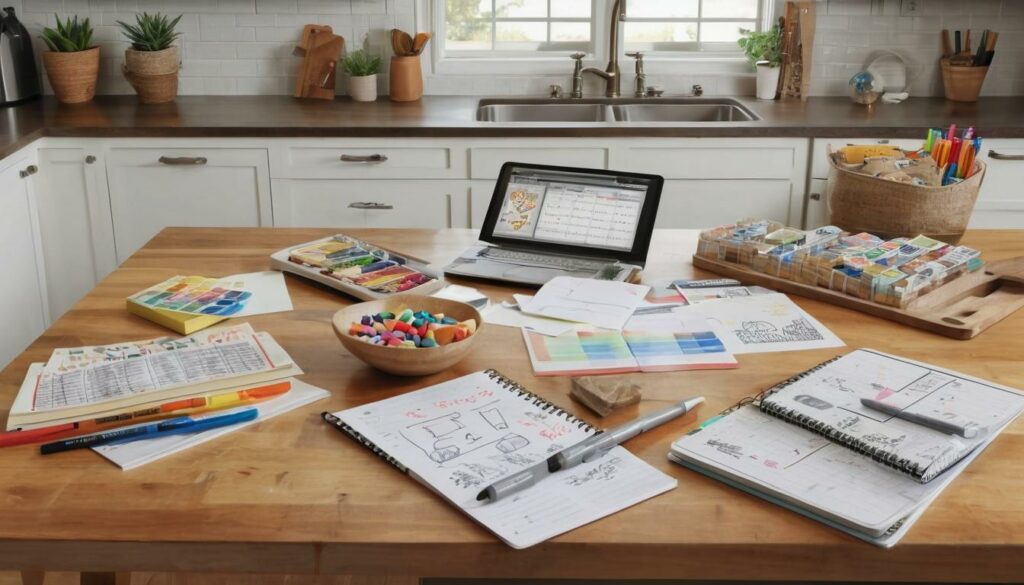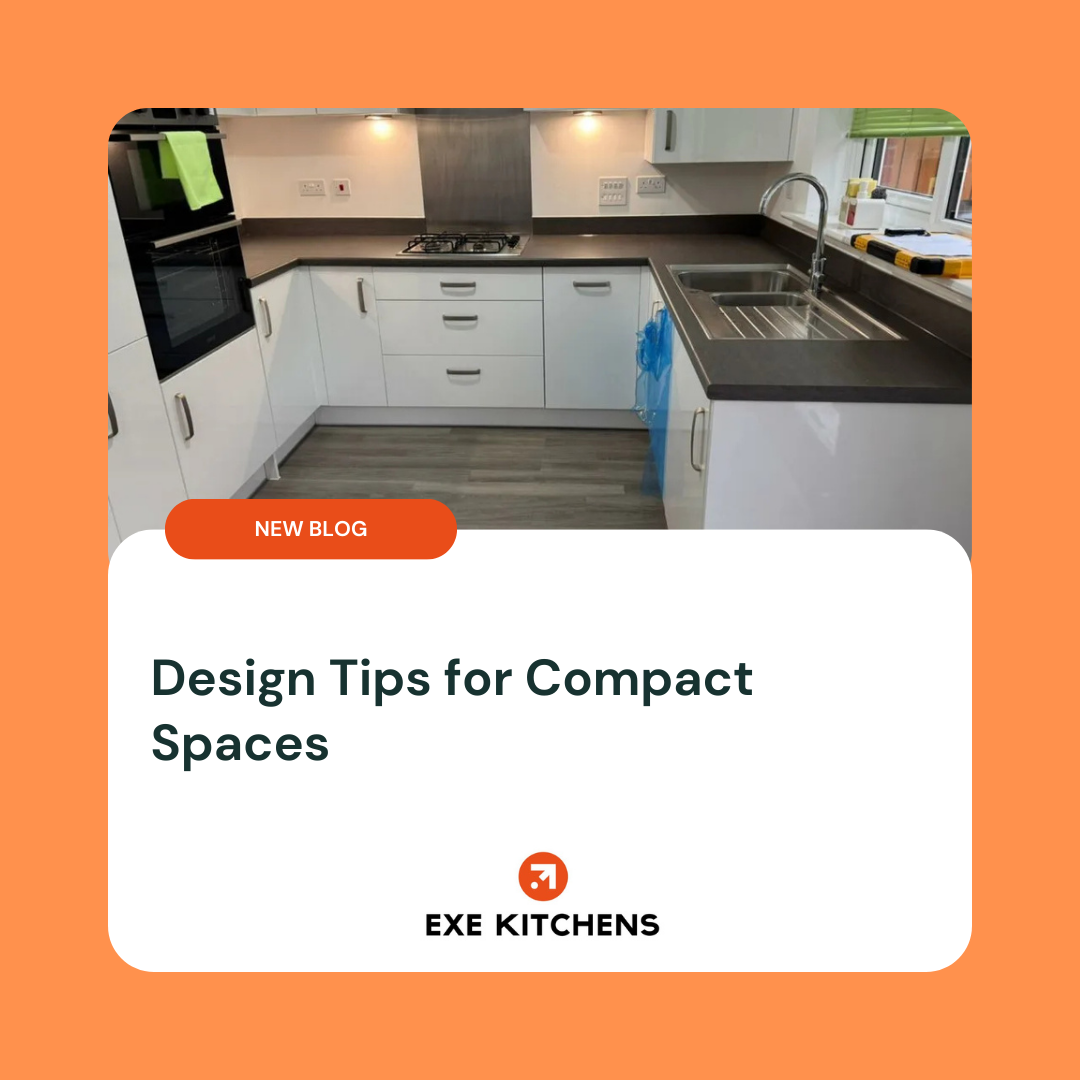Budgeting Tips for Kitchen Renovation: Expert Advice for Smart Savings
Your kitchen is more than just a place to cook; it’s the heart of your home. Balancing dreams with dollars can feel overwhelming as you begin planning your kitchen renovation. While typical projects might set you back between $12,000 and $35,000, smart planning can help keep your budget intact.
By digging deep into financial assessments and prioritizing essential features, you can transform your space without overspending. Imagine savoring coffee at your new breakfast bar knowing each decision was backed by careful research and expert advice. Here’s how to start: first, establish your budget.
To effectively budget for a kitchen renovation, start by determining your overall budget and prioritizing your needs and wants. It is advisable to allocate about 15-20% of your total budget for unexpected expenses, as renovations often encounter unforeseen costs.

Establishing Your Renovation Budget
When it comes to setting your renovation budget, the first step is understanding where your financial limits lie. You might initially feel overwhelmed by the numbers, but breaking it down will make it manageable. Start by figuring out how much you’re comfortable spending; a typical kitchen renovation can range from $12,000 to $35,000, depending on what you’re planning. This range is just a starting point—every decision you make will influence the final cost.
To lay a strong foundation for your budget, assess your current savings thoroughly. Look at your available funds and establish whether you need additional financing, like a loan or a home equity line of credit. Remember that while additional funds can give you more flexibility, they also come with obligations—interest rates and repayment terms can impact your finances long after the renovation is complete.
It’s crucial to calculate the maximum amount you can afford without harming your overall financial health. Think about not just how much money you can spend today, but how this expenditure might affect your ability to save for future goals or handle unexpected expenses.
As you set this amount, keep in mind hidden costs that often accompany renovations. From permit fees to unforeseen structural issues when opening up walls, it’s wise to include a buffer—a common recommendation is around 10-20% of your total budget set aside for these surprises.
With a defined figure that encompasses both expected expenses and contingencies, you’ll find it easier to prioritize what features are essential in your new kitchen. Whether that’s investing in energy-efficient appliances or custom cabinetry that suits your style, having a clear picture of your budget makes decision-making simpler.
Understanding and documenting all these aspects will pave the way towards making informed choices as you focus on essential elements that will enhance both functionality and aesthetic appeal in your space.
Prioritizing Essential Features
When embarking on a kitchen renovation, it’s crucial to focus on the essential features that will truly enhance both the functionality and aesthetic of the space. To do this effectively, begin by listing out must-have elements such as new appliances, updated countertops, and high-quality cabinetry. Each of these items plays a significant role in how your kitchen performs daily and determines its overall appeal.
As you list these crucial components, take a moment to rank them in order of importance to allocate your budget wisely. For example, if you love cooking and consider yourself a culinary enthusiast, investing in a top-tier stove would be more beneficial than splurging on extravagant lighting fixtures. Your goal should be to put most of your financial resources toward elements that will enhance utility and longevity in your kitchen.
Remember, a renovated space that’s visually stunning but lacks functional appliances won’t fulfill your needs. The balance between aesthetics and practicality is vital.
At this stage, consider what aspects are non-negotiable for you personally—a second oven, a large island for prep work? By defining these priorities early on, you carve a clear path forward and prevent potential overspending on items that won’t significantly improve your experience in the kitchen.
It’s equally important to research and understand the costs associated with each priority item. Digging into material pricing not only allows for more accurate budgeting but also helps avoid unexpected expenses down the line. This part of the process turns into an enlightening discovery where you can compare quality against price point, ensuring what you choose aligns with your budget constraints without sacrificing value.
By focusing on essential features and understanding their costs, you’re setting yourself up for a successful renovation journey while managing expenditures effectively. Now, we shift our attention to examining the various costs associated with materials for your project.
Researching Material Costs
One of the most effective ways to manage costs during a kitchen renovation is to conduct thorough research on the materials you’ll need. This begins with comparing prices—a simple yet often overlooked step. For high-ticket items such as marble, quartz, or granite countertops, visiting different suppliers can yield surprising results. Each supplier has its own pricing structure based on overhead costs and sourcing strategies. Some may offer premium prices due to their expert installations, while discount suppliers might provide similar quality at a significantly lower price.
Using online platforms can be particularly useful here, as they often showcase transparent pricing and customer reviews, helping you gauge both cost and quality without stepping foot outside your home.
After you’ve established a broad understanding of price ranges, tapping into seasonal sales can result in substantial savings.
Look for Sales
Home improvement stores frequently hold clearance or seasonal sales that could slash prices on top-tier materials. Planning your purchase during these promotional events can make a remarkable difference in your budget—sometimes reducing material costs by as much as 30% or even more.
Keep an eye out for bulk discounts as well; if you need several items like cabinets, flooring, or fixtures, buying them all at once could unlock additional savings opportunities. It’s a smart move to subscribe to newsletters from your favorite suppliers or regularly check their websites; many businesses announce special sales through these channels.
However, while price is crucial, it’s equally important to consider the quality of materials.
Quality vs. Cost
Striking the right balance between cost and quality is essential. Choosing the cheapest option might save money upfront but could lead to increased expenses down the line due to repairs or replacements. Selecting mid-range materials often provides the best value; for instance, engineered wood flooring offers a sophisticated aesthetic and durability without the hefty price tag associated with solid hardwood floors.
Meanwhile, laminate countertops can effectively mimic the look of natural stone at a fraction of the cost. Taking the time to read product reviews and consult with professionals can help you discern which options deliver longevity and style without jeopardizing your budget.
By integrating research, timing purchases strategically, and balancing quality with cost-effectiveness, you’re laying the groundwork for successful budgeting in your renovation project. The next steps will involve analyzing costs related to professional assistance and services needed throughout this process.
Estimating Contractor Fees
Contractor fees can be a significant part of your kitchen renovation costs, and having a firm grasp on what to expect will put you in a better position to plan effectively. One of the first things to consider is whether the contractor charges hourly rates or provides fixed bids for the project. The choice can greatly impact your budget; while fixed bids offer predictability, hourly rates can fluctuate based on how long tasks actually take. Therefore, if you opt for an hourly rate, it’s crucial to know an estimated timeline for your specific renovations.
Understanding the scope of work is equally important when estimating costs. Make sure you are clear about what the contractor includes in their quote. Some contractors may give lower estimates but exclude critical elements like permits or cleanup, which could lead to unexpected charges later on.
Additionally, location plays a pivotal role in determining labor costs. For example, urban areas usually have higher rates than rural regions due to increased demand and cost-of-living factors. This discrepancy can be quite pronounced; in fact, it’s not unusual for contractor fees in major cities to fall between $50 and $150 per hour. Thus, understanding local market conditions can aid significantly in budgeting for your project.
When seeking out contractors, remember the importance of gathering multiple quotes from reliable sources. Not only does this practice allow for better comparison of services offered, but it also highlights any pricing anomalies in the market that might warrant further investigation. Be cautious of quotes that seem unusually low—they might signal cut corners or materials of lesser quality.
It’s prudent to communicate clearly with potential contractors regarding payment structures and expected timelines before committing. That way, you’ll have a clearer view of your financial landscape as you proceed with your renovations.
With these considerations firmly in mind, you will be better prepared to navigate the complexities of budgeting while minimizing unexpected expenses as you look deeper into strategies for maximizing your renovation dollars.
Tips for Cost-Effective Renovation
One of the foundational principles of a successful kitchen renovation is to think creatively about how you can achieve maximum impact without overspending. For instance, repurposing and upcycling are two powerful concepts that allow you to breathe new life into existing materials without breaking the bank. A tired set of cabinets can transform into statement pieces simply by repainting them in a fresh, modern color or updating the hardware. This not only saves money but also preserves the character of your kitchen.
Beyond cabinetry, consider incorporating vintage or reclaimed materials that imbue unique charm and a storyline into your space, creating a personal touch without hefty expenses.
Building on this creative approach, let’s explore how do-it-yourself (DIY) elements can further help you trim costs during your renovation project.
You might be surprised at how many tasks you can tackle yourself. Whether it’s painting walls or laying down tile backsplashes, involving yourself in these processes can dramatically cut labor costs. The satisfaction of completing these projects personally brings an added sense of ownership and pride in your newly renovated kitchen. There are abundant online tutorials for various DIY projects that can demystify even the most daunting tasks.
Naturally, it’s crucial to assess your skill level objectively to avoid pitfalls—take on what you feel confident in while leaving more complex tasks to professionals.
As you think about saving costs, don’t overlook the long-term benefits of investing in energy-efficient appliances.
While energy-efficient models may come with a bigger initial price tag, they often lead to significant savings on utility bills over time. These appliances typically use less energy and water than their conventional counterparts, which translates into monthly savings that accumulate quickly.
Moreover, many states offer rebates or tax incentives for choosing energy-efficient options, making them an even smarter financial choice. When purchasing new appliances, consult reviews or qualifying criteria for efficiency ratings; this ensures you’re making a sound investment that will pay dividends down the line.
With these strategies in mind, we now shift our focus toward navigating the unavoidable challenges that arise during any renovation journey.
Managing Unexpected Expenses

During any renovation project, even the most meticulous plans can encounter unforeseen difficulties. Whether it’s discovering that your plumbing needs an upgrade or realizing your flooring has extensive water damage, these surprises can be costly. One of the best strategies to handle these unexpected bumps along the road is to build a contingency fund into your overall budget.
The general guideline is to allocate at least 10-15% of your total budget for this purpose. This means that if you have a budget of $20,000 for your renovation, setting aside approximately $2,000 to $3,000 can act as a safety net.
This contingency fund not only allows you to address these issues as they come up but also provides peace of mind throughout the renovation process. Knowing there’s a financial cushion can alleviate some of the stress associated with surprises. For example, if you find out that outdated wiring needs replacement during your renovation, instead of panicking about where new funds will come from, you simply tap into this reserve.
It’s essential to remember that preparation is key; having that buffer helps you maintain control and ensures that unplanned situations don’t derail your entire project.
Aside from setting aside funds, communication with contractors and tradespeople is vital. Regular check-ins can help identify potential problems early on before they escalate into significant issues demanding more extensive resources. If you’re working with professionals, ensure they’re aware of your budget constraints and encourage them to flag any concerns they see in advance.
The combination of a well-prepared contingency fund and proactive communication sets a solid groundwork for navigating challenges that arise during renovations. As we move forward, let’s explore how to effectively structure and finalize your financial strategy.
Finalizing Your Budget Plan

Finalizing your budget plan is like taking a snapshot of your kitchen renovation journey before you dive into the project. It’s crucial to gather all estimated costs into a clear, cohesive format so that every aspect of the renovation is accounted for. You want to create a guide that not only serves as a financial roadmap but also anchors your ideas and aspirations, ensuring that everything you desire fits within your means.
| Item | Estimated Cost ($) | Notes |
|---|---|---|
| New Appliances | 5,000 | Priority for cooking enthusiasts |
| Countertops | 3,000 | Choose granite for a balance of cost and quality |
| Cabinet Upgrades | 2,500 | Repaint and add new hardware |
| Contractor Fees | 7,000 | Based on fixed bids |
| Material Costs | 1,500 | Tiles and flooring |
| Contingency Fund | 2,500 | 10-15% of total budget |
| Total Estimated Budget | 21,500 |
This table encapsulates the major expenses likely to arise during your renovation. While it may feel comprehensive, consider prioritization—what upgrades are essential for you? Perhaps enhanced kitchen appliances are non-negotiable, while aesthetic enhancements like a backsplash can wait.
As you embark on this project, revisit each category regularly during the renovation process to track expenses and ensure adherence to your budget. This practice allows you to identify areas where you might save or need to divert funds if additional costs sneak in unexpectedly.
Focusing on careful monitoring helps mitigate financial pitfalls. If certain items come in under budget, think strategically about reallocating those funds toward aspects of the kitchen that will bring even greater satisfaction. Staying engaged in the budgeting process creates accountability and fosters smart spending while maintaining alignment with your vision.
By finalizing your budget thoughtfully and keeping an eye on expenses throughout your renovation journey, you pave the way for both a beautiful kitchen transformation and financial peace of mind.
Ultimately, a well-structured budget not only streamlines your renovation process but also enhances the joy of creating your dream kitchen. Stay focused on both practical and aesthetic goals to achieve rewarding results.
What strategies can I use to save money during a kitchen remodel?
To save money during a kitchen remodel, consider strategies such as prioritizing essential updates over luxury items, using open shelving instead of cabinetry—which can save you up to 30% on storage costs—and employing DIY methods for painting or minor installations. Research indicates that kitchens typically return about 70-80% of their investment upon resale, so focusing on value-enhancing changes like energy-efficient appliances and durable materials can help maintain long-term savings while boosting your home’s appeal.
How do I determine the return on investment for different kitchen upgrades?
To determine the return on investment (ROI) for kitchen upgrades, start by researching local real estate trends and values, as kitchen renovations can average a 70-80% ROI depending on the extent of the upgrade. Calculate the costs of your renovation and compare them to the potential increase in home value post-renovation. For instance, a minor kitchen remodel may recoup approximately 81% of its cost, while a more extensive renovation might yield around 60-70%. Utilizing online tools or consulting with real estate professionals can provide valuable insights specific to your area.
How can I prioritize my kitchen renovation needs versus wants?
To effectively prioritize your kitchen renovation needs versus wants, start by assessing the functionality and safety of your current kitchen; for instance, 60% of homeowners cite improved usability as their primary goal. Identify essential upgrades like plumbing and electrical systems that must be addressed to ensure a safe environment. Next, categorize cosmetic improvements—such as cabinetry or countertops—as “wants.” By focusing first on essential repairs and energy-efficient appliances, you not only enhance your kitchen’s value but also set a solid foundation before indulging in aesthetic enhancements.
What unexpected expenses should I be aware of when planning a kitchen renovation?
When planning a kitchen renovation, be prepared for unexpected expenses such as plumbing and electrical upgrades, which often arise from code requirements or outdated systems. According to industry experts, nearly 30% of renovation budgets can be diverted to these hidden costs if not accounted for early on. Additionally, delays due to unforeseen circumstances like material shortages or contractor scheduling conflicts can lead to increased labor costs, adding further strain on your budget. Therefore, it’s wise to set aside at least 15-20% of your total budget as a contingency fund for these surprises.
What are the common costs associated with a kitchen renovation?
Common costs associated with a kitchen renovation include cabinetry, typically accounting for 30-40% of the budget, countertops (10-20%), appliances (10-15%), and labor costs (20-35%). According to a recent survey by HomeAdvisor, the average cost of a kitchen remodel ranges from $12,000 to $34,000, depending on the extent of renovations. Additionally, plumbing and electrical upgrades can add unexpected costs, so it’s wise to allocate a contingency bu


